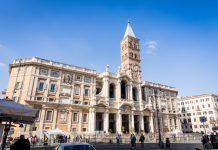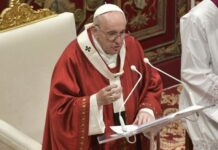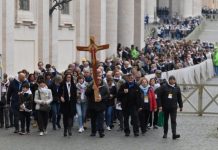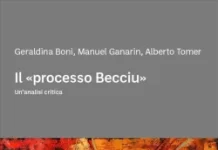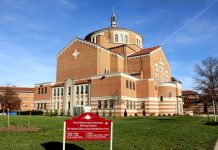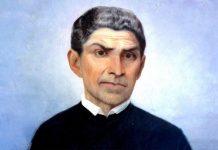Saint Raimundo Nonato is venerated as the Patron Saint of Parturients, Midwives and Obstetricians.
Newsroom 04/09/2022 1:37PM, Gaudium Press) Saint Raymond was born in 1204, in Portel, in the diocese of Urgel, Catalonia. They gave him the cognomen Nonato, he who was not born, because his mother, having died before his birth, took him out of her body by caesarian operation. His relatives were from a noble family, but they had little in the way of wealth. In his childhood, he showed a taste for the exercises of piety and the fulfillment of duties. The penetration of his spirit led him, as quickly as he had succeeded, to a career in fine arts.
His father, who noticed in him an inclination for the monastic life, or at least for the ecclesiastical state, sent him to the country to work on a farm. His intention was to keep him away from his vocation and his studies. The saint obeyed without reply, and out of love for solitude, he took on the care of herding the flock. He imitated, in the mountains and forests, the life of the ancient anacoreta.
The Apparition of the Virgin
Now, in the field where the young Raymond was herding his sheep, there was a small church or hermitage dedicated to St. Nicholas of Mira, and in this church, a beautiful image of the Mother of God. The young Raimundo, who had lost his mother before coming into the world, often went to pray fervently before that saint.
One day, when he had opened his heart to her, the holy Virgin appeared to him and said with ineffable sweetness: “Fear not, Raymond, from now on I take you for my son; you can then in all truth call me your mother and be sure of my protection for the future. From that moment on, although he considered himself the most humble servant of the Queen of Heaven, he couldn’t help but call her loudly by the name of mother and protest that he had never said another one, nor that he would ever have one. Every day he prayed the rosary at the feet of that image.
Jealous of such pure youth, the spirit of darkness appeared to them in the form of a shepherd, trying to persuade him that a young man of nobility should not lead such a rustic and solitary life, that he should go to more famous places. The boy replied that he would only follow the advice of his very sweet mother, the Virgin Mary. At this name the devil fled with a horrible bang. Raymond went to his customary asylum, thanked his divine deliverer, and in her honor consecrated his virginity to God.
Mary witnessed his maternal satisfaction, and advised him to enter the Order of the Redemption of Captives, whose foundation she had just inspired Saint Peter Nolasco to found. Raymond asked for nothing better, but feared his father’s opposition. The Count of Cardone, inspired by the Holy Virgin, obtained his consent. He was a gentleman of his relatives who often came on pilgrimage to the hermitage of St. Nicholas. Raimundo then went to Barcelona and took his vows into the hands of St. Peter Nolasco, founder of the Order of Mercy.
The Redemption of Captives
The new religious became a model for his brothers by his fervor, his mortification and other virtues. His progress in perfection was so surprising that, after two or three months of profession, they judged him worthy to exercise the office of redeemer and replace in this respect St. Peter Nolasco. Having been sent to Barbary, he obtained from the Algerians the freedom of a great number of slaves, when his funds were exhausted, he gave himself as a hostage, for the rescue of the Christians whose situation was most rude and whose faith was most at risk. His generous sacrifice of his freedom only served to irritate the Mohammedans. They treated him with such inhumanity that he would have died at their hands, if the fear of losing the stipulated sum had not led Cadiz, or the magistrate of the city, to give orders that he should be spared. They then let him breathe and allowed him to go wherever he wanted.
He took advantage of the permission granted to him, to visit Christians and console them. He also opened the eyes of several Muslims who received baptism. The governor, having been informed, condemned him to be hanged. But those who were interested in the payment of the ransom for the captives, for whom he was being held hostage, obtained a reprieve, and he was cruelly beaten. This torture did not diminish his courage; he thought he had done nothing, while he saw his brothers in danger of being eternally lost: nor did he miss any opportunity to come to their aid. When a man, he said with St. Chrysostom, gives to the poor immense treasures, that good work in no way approaches that of a man who contributes to the salvation of a soul. This almsgiving is preferable to the distribution of ten thousand talents; it is worth more than the whole world, however great it may seem to our eyes, for one man is more precious than the whole universe.
The saint had no more money to ransom the slaves; on the other hand, it was a capital offense among Muslims to speak of religion to those of their sect. If he let himself be carried away by the hope of some success, he found himself exposed to death, a victim of charity. He resumed his first method, however, of exhorting the Christians and instructing the unbelievers. The governor, informed of his actions, became very angry; he was whipped on every street corner, then his lips were pierced with a hot iron in a public square, and his mouth was closed with a padlock, which only opened when he had to eat. He was then bound in chains and locked up in a dungeon. He stayed there for eight months and only came out when the priests of Mercês brought the ransom that Saint Peter Nolasco sent. Seeing that they did not want to leave him in prison, he asked at least to be allowed to live among the slaves, who were in urgent need of help. But the orders of his general, who was calling him, forced him to leave.
Saint Raymond, Cardinal
When he arrived in Spain, he was named Cardinal by Pope Saint Gregory IX. His nomination to this dignity did nothing to change his feelings; he always kept the habit and the primitive way of living. He preferred the cell to a palace that was offered to him; he did not want rich furnishings and was content with what was sufficient for the needs of nature. The Pope called him to Rome, hoping that he would be very useful to the government of the Church.
He set out and traveled with the simplicity of a poor religious; but as soon as he reached Cardona, which is six miles from Barcelona, he was attacked by a violent fever. The symptoms that announced the coming end were immediately visible in him. He died on August 31, 1240, at the age of thirty-seven. He was buried in the same chapel of Saint Nicholas where he had begun his novitiate of sanctity in his youth. St. Peter Nolasco had a convent of his order built in 1255 and Raimundo’s relics are still preserved there. The story of his miracles was inserted in the collection of the Bolandists. Pope Alexander II placed him in the Roman Martyrology in the year 1657.
(Life of the Saints, Father Rohrbacher, Volume XV, p. 350 to 354)
Compiled by Angelica Vecchiato




